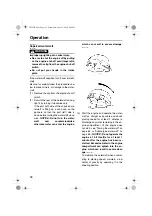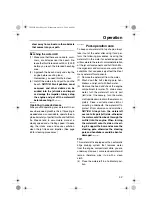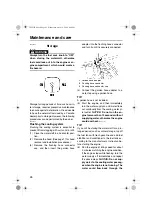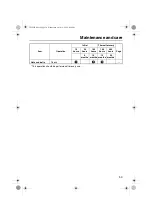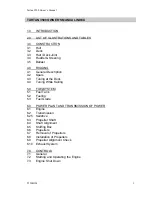
Operation
38
EJU33121
Boarding and starting in deep water
WARNING
EWJ01260
Be sure the operator have practiced
boarding from the water while still close to
shore before riding. A person who has
made many unsuccessful attempts to get
back on the watercraft may become fa-
tigued and suffer from exposure, increas-
ing the risk of injury and drowning.
(1) Swim to the rear of the watercraft. Attach
the engine shut-off cord (lanyard) to your
left wrist, and then attach the clip to the
engine shut-off switch.
(2) Grip the handlebars with both hands. Pull
your body up onto the riding tray and bal-
ance there, using your elbows on the
gunwales for leverage.
(3) Start the engine and begin to accelerate.
(4) Continue to pull your body up onto the
watercraft as the watercraft speed in-
creases.
(5) Bring your knees up onto the riding tray
and change to a kneeling position as
soon as you can do so.
WARNING!
Avoid forceful jet thrust and limited
visibility while reboarding. Get to a
standing or kneeling position quickly,
but do not expose yourself to the
forceful jet thrust.
[EWJ00631]
(6) Move as far forward as possible without
interfering with the movement of the han-
dlebars. Keep your body perpendicular to
the water, with your weight forward and
low.
(7) Once the bow drops, and the watercraft
has leveled out in the water and reached
planing speed, back off the throttle and
select your desired speed.
TIP:
●
The watercraft will become easier to bal-
ance as the speed increases, because jet
thrust provides stability as well as direction-
al control.
●
It will take longer for a heavier operator to
reach planing speed than it will for a light
operator.
UF2F21E0.book Page 38 Wednesday, April 16, 2008 8:40 PM
















